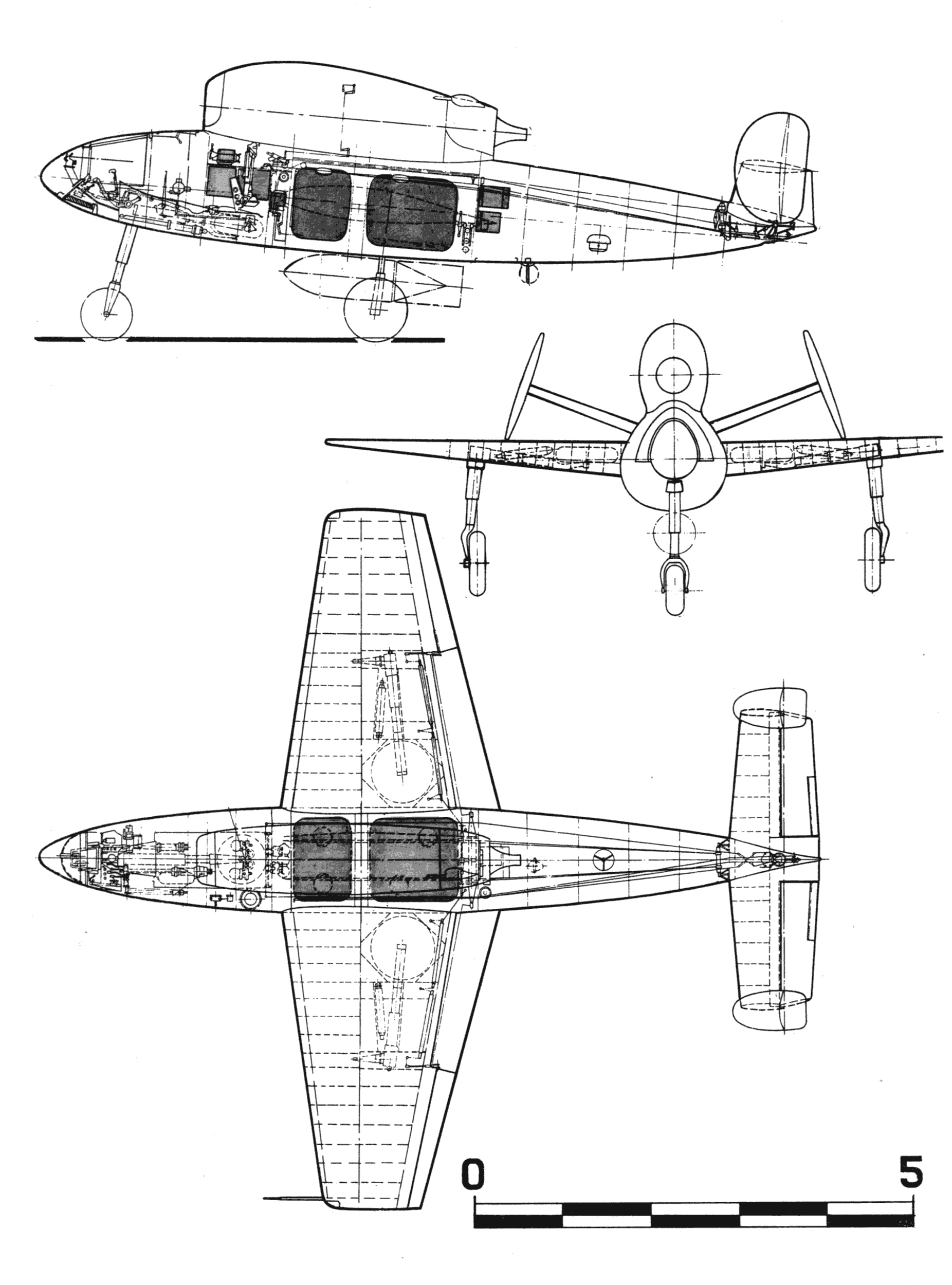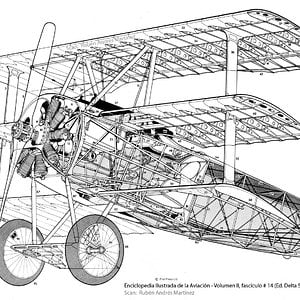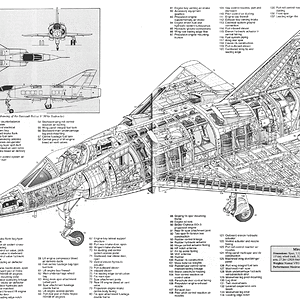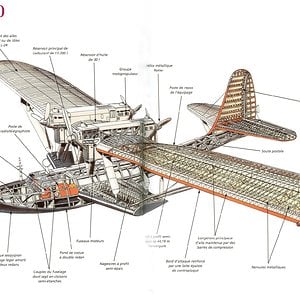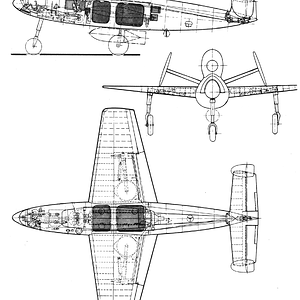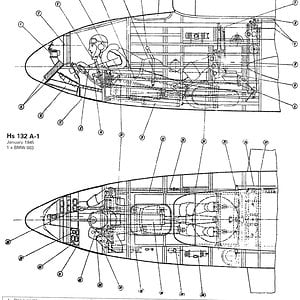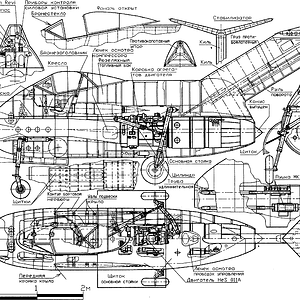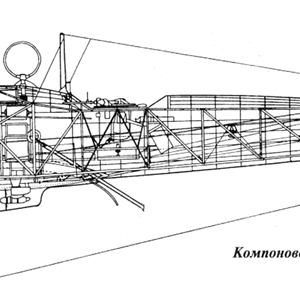Navigation
Install the app
How to install the app on iOS
Follow along with the video below to see how to install our site as a web app on your home screen.
Note: This feature may not be available in some browsers.
More options
You are using an out of date browser. It may not display this or other websites correctly.
You should upgrade or use an alternative browser.
You should upgrade or use an alternative browser.
Design and development
There had been interest in the idea of a prone pilot for combat aircraft to reduce the effect of g-forces during maneuvering. Several aircraft had already experimented with this layout for various reasons, the Horten IIIf had a prone pilot, but this was primarily to reduce drag in this high-performance glider,[1] while the DFS 228 reconnaissance glider also used a prone pilot to make it easier to seal its pressurized cabin.[2] It was not until the Berlin B9 was built specifically to test this arrangement for improved g-load that any serious effort toward development could be carried out.
Starting in early 1943, the Berlin B9 twin-piston engined experimental aircraft demonstrated that it was indeed possible for a pilot to fly the aircraft lying down, and that it did improve his ability to handle high loads. The pilot had an extremely restricted field of view upward or to the rear that made it suitable only for certain roles, including bombers or fighters or interceptors with a major speed advantage over their opposition.[3]
Based on this research, several late-war German designs followed the B9's lead and used a prone pilot. Better g-load performance was not the only reason, however, as this layout also reduced the frontal area of the aircraft. This was a serious concern for interceptors attacking the USAAF's B-17 Flying Fortress, as calculations showed that the chance of being hit by its defensive guns was largely a function of frontal area.
The genesis for the Hs 132 was an 18 February 1943 specification published by the German Air Ministry (RLM) calling for a single-seat shipping attack aircraft to counter an expected invasion of Europe. A piston-engined aircraft was called for at the time, but the performance requirements led to a switch to jet power.[3] Henschel submitted their design for RLM approval in April/May 1944, by which point they had already started wind tunnel testing the basic layout. The aircraft that emerged had a roughly cigar-shaped fuselage with short-span mid-set wings and a horizontal stabilizer with considerable dihedral ending in twin rounded rudders.
The BMW 003 engine was mounted on the back of the aircraft above the wing, likely to make servicing easier due to the low ground height of the aircraft that put the engine roughly shoulder-height. The sharply dihedraled 'butterfly' twin rudder arrangement kept the tail surfaces and rudder assemblies clear of the jet efflux. The cockpit was completely faired into the fuselage contour, with a rounded clear nose-cone on the front of the aircraft. Behind this was the actual "window," a large armored-glass plate located some distance behind the extreme nose. The design in terms of engine mounting and tailplane bore a very strong resemblance to the contemporary Volksjäger "people's fighter" design competition winner, the Heinkel He 162 Spatz (sparrow). The basic A model was armed with one 500 kg bomb and no other armament. It was to begin its attack in a shallow dive outside the ships' range of fire, and after reaching a speed of 910 km/h (565 mph), the pilot would "toss" the bomb at the target using a simple computerized sight, and then climb back out of range. The aircraft was stressed to 12 g for the pullout. The computerized bombsight was not delivered in time to be fitted to the aircraft.
Several other versions of the basic airframe were proposed as well. The Hs 132B used the Junkers Jumo 004 engine in place of the BMW 003, and added two 20 mm MG 151/20 cannons. The HS 132C was a more extensively modified version intended for bomber interception, featuring the larger Heinkel HeS 011 engine, two 20 mm MG 151/20s and two 30 mm (1.2 in) MK 103 or MK 108 cannons as well. The HeS 011, intended to power a wide variety of new and existing Luftwaffe aircraft (an example of the latter being the proposed D and P series of the Arado Ar 234 jet bomber), was still in the pre-production phase when the war ended. It was hoped that by the time the B model came on stream the Panzerblitz tank-busting rocket missile would be in production and able to be employed by the 132. The missile - a radical adaptation of the R4M Orkan unguided air-to-air rocket used by the Messerschmitt Me 262 - mounted in its' two models either a 80mm standard (Panzerblitz I) or 210mm hollow charge (Panzerblitz III) warhead. It was intended that the 132 would carry up to eight of the missiles, complementing or even replacing the cannon armament in the tank-destroying role. The 80mm model was tested extensively in early 1945, using Fw 190s as the launching craft, but neither it nor Panzerblitz III (earmarked exclusively for the 132) were ready for use by the German surrender in May 1945. The Hs 132D included a new wing of increased span.A contract for six prototypes was approved in May 1944, and construction was begun in March 1945. Hs 132V1 was scheduled to have its first flight in June 1945, but the completed wings and fuselage were never mated, and Russian forces captured the intact fuselage in May 1945 while the wings were never moved from their factory in France.
[edit]Variants
Hs 132A Dive bomber
BMW 003 turbojet engine, 1 × 500 kg (1,100 lb) bomb
Hs 132B Dive bomber/Anti-tank plane
Jumo 004 turbojet engine, 1 × 500 kg (1,102 lb) bomb, 2 × 20 mm MG 151 cannon, and/or six or eight Panzerblitz anti-tank rockets
Hs 132C Dive bomber
He S 011 turbojet engine, 1 × 500 kg (1,100 lb) bomb, 2 × 20 mm MG 151 cannon and 2 × 30 mm (1.2 in) MK 103 cannon
Hs 132D
Increased wingspan variant
[edit]Specifications (Hs 132A)
General characteristics
Crew: 1
Length: 8.90 m (29 ft 2½ in)
Wingspan: 7.20 m (23 ft 7½ in)
Height: 3.00 m (9 ft 10 in)
Wing area: 14.80 m² (159.30 ft²)
Loaded weight: 3,400 kg (7,496 lb)
Powerplant: 1 × BMW 003A turbojet, 7.8 kN (1,760 lb at 9,500 rpm)
Performance
Maximum speed: (780 km/h at 6,000 m (700 km/h with bomb)) (485 mph at 19,685 ft (435 mph with bomb))
Range: (with bomb) 1,120 km (696 miles)
Service ceiling: (with bomb) 10,000 m (32,810 ft)
Armament
up to 500 kg (1,100lb) of disposable stores on external rack
There had been interest in the idea of a prone pilot for combat aircraft to reduce the effect of g-forces during maneuvering. Several aircraft had already experimented with this layout for various reasons, the Horten IIIf had a prone pilot, but this was primarily to reduce drag in this high-performance glider,[1] while the DFS 228 reconnaissance glider also used a prone pilot to make it easier to seal its pressurized cabin.[2] It was not until the Berlin B9 was built specifically to test this arrangement for improved g-load that any serious effort toward development could be carried out.
Starting in early 1943, the Berlin B9 twin-piston engined experimental aircraft demonstrated that it was indeed possible for a pilot to fly the aircraft lying down, and that it did improve his ability to handle high loads. The pilot had an extremely restricted field of view upward or to the rear that made it suitable only for certain roles, including bombers or fighters or interceptors with a major speed advantage over their opposition.[3]
Based on this research, several late-war German designs followed the B9's lead and used a prone pilot. Better g-load performance was not the only reason, however, as this layout also reduced the frontal area of the aircraft. This was a serious concern for interceptors attacking the USAAF's B-17 Flying Fortress, as calculations showed that the chance of being hit by its defensive guns was largely a function of frontal area.
The genesis for the Hs 132 was an 18 February 1943 specification published by the German Air Ministry (RLM) calling for a single-seat shipping attack aircraft to counter an expected invasion of Europe. A piston-engined aircraft was called for at the time, but the performance requirements led to a switch to jet power.[3] Henschel submitted their design for RLM approval in April/May 1944, by which point they had already started wind tunnel testing the basic layout. The aircraft that emerged had a roughly cigar-shaped fuselage with short-span mid-set wings and a horizontal stabilizer with considerable dihedral ending in twin rounded rudders.
The BMW 003 engine was mounted on the back of the aircraft above the wing, likely to make servicing easier due to the low ground height of the aircraft that put the engine roughly shoulder-height. The sharply dihedraled 'butterfly' twin rudder arrangement kept the tail surfaces and rudder assemblies clear of the jet efflux. The cockpit was completely faired into the fuselage contour, with a rounded clear nose-cone on the front of the aircraft. Behind this was the actual "window," a large armored-glass plate located some distance behind the extreme nose. The design in terms of engine mounting and tailplane bore a very strong resemblance to the contemporary Volksjäger "people's fighter" design competition winner, the Heinkel He 162 Spatz (sparrow). The basic A model was armed with one 500 kg bomb and no other armament. It was to begin its attack in a shallow dive outside the ships' range of fire, and after reaching a speed of 910 km/h (565 mph), the pilot would "toss" the bomb at the target using a simple computerized sight, and then climb back out of range. The aircraft was stressed to 12 g for the pullout. The computerized bombsight was not delivered in time to be fitted to the aircraft.
Several other versions of the basic airframe were proposed as well. The Hs 132B used the Junkers Jumo 004 engine in place of the BMW 003, and added two 20 mm MG 151/20 cannons. The HS 132C was a more extensively modified version intended for bomber interception, featuring the larger Heinkel HeS 011 engine, two 20 mm MG 151/20s and two 30 mm (1.2 in) MK 103 or MK 108 cannons as well. The HeS 011, intended to power a wide variety of new and existing Luftwaffe aircraft (an example of the latter being the proposed D and P series of the Arado Ar 234 jet bomber), was still in the pre-production phase when the war ended. It was hoped that by the time the B model came on stream the Panzerblitz tank-busting rocket missile would be in production and able to be employed by the 132. The missile - a radical adaptation of the R4M Orkan unguided air-to-air rocket used by the Messerschmitt Me 262 - mounted in its' two models either a 80mm standard (Panzerblitz I) or 210mm hollow charge (Panzerblitz III) warhead. It was intended that the 132 would carry up to eight of the missiles, complementing or even replacing the cannon armament in the tank-destroying role. The 80mm model was tested extensively in early 1945, using Fw 190s as the launching craft, but neither it nor Panzerblitz III (earmarked exclusively for the 132) were ready for use by the German surrender in May 1945. The Hs 132D included a new wing of increased span.A contract for six prototypes was approved in May 1944, and construction was begun in March 1945. Hs 132V1 was scheduled to have its first flight in June 1945, but the completed wings and fuselage were never mated, and Russian forces captured the intact fuselage in May 1945 while the wings were never moved from their factory in France.
[edit]Variants
Hs 132A Dive bomber
BMW 003 turbojet engine, 1 × 500 kg (1,100 lb) bomb
Hs 132B Dive bomber/Anti-tank plane
Jumo 004 turbojet engine, 1 × 500 kg (1,102 lb) bomb, 2 × 20 mm MG 151 cannon, and/or six or eight Panzerblitz anti-tank rockets
Hs 132C Dive bomber
He S 011 turbojet engine, 1 × 500 kg (1,100 lb) bomb, 2 × 20 mm MG 151 cannon and 2 × 30 mm (1.2 in) MK 103 cannon
Hs 132D
Increased wingspan variant
[edit]Specifications (Hs 132A)
General characteristics
Crew: 1
Length: 8.90 m (29 ft 2½ in)
Wingspan: 7.20 m (23 ft 7½ in)
Height: 3.00 m (9 ft 10 in)
Wing area: 14.80 m² (159.30 ft²)
Loaded weight: 3,400 kg (7,496 lb)
Powerplant: 1 × BMW 003A turbojet, 7.8 kN (1,760 lb at 9,500 rpm)
Performance
Maximum speed: (780 km/h at 6,000 m (700 km/h with bomb)) (485 mph at 19,685 ft (435 mph with bomb))
Range: (with bomb) 1,120 km (696 miles)
Service ceiling: (with bomb) 10,000 m (32,810 ft)
Armament
up to 500 kg (1,100lb) of disposable stores on external rack

